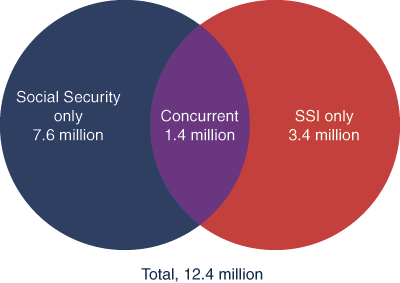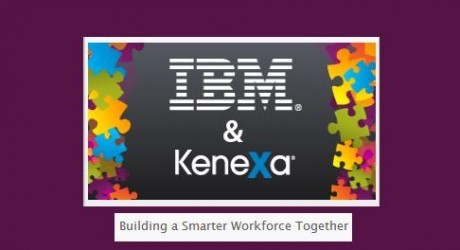
The material increase in Social Security Disability Insurance (SSDI) and Social Security Insurance (SSI) awards over the past 2+ decades is due in part to a significant increase in the use of pre-employment assessments by employers that screen out persons with mental disabilities from employment consideration:
- SSDI and SSI beneficiary payments by the United States Treasury currently amount to more than $10 billion per month. [1]
- Applications for SSDI and SSI awards have increased from more than 1.2 million in 1999 to more than 2.8 million in 2010. [2]
- The “supply” of persons eligible to apply for SSDI and SSI awards may be defined by reference to the universe of unemployed (or underemployed) persons. [3]
- Assessments utilize the five factor model (FFM) of personality. FFM is widely accepted as representing the higher-order structure of both normal and abnormal personality traits. FFM-based assessments are used to identify (or “screen in”) persons who are “normal” or “stable” and, as a consequence screen out persons with mental illness. (Please see the ADA, FFM and DSM post.)
- While assessments are based on the characteristics of the employer’s “preferred” employees for the relevant position, the small number of individuals with disabilities in the workforce means that the norming of pre-employment assessments was conducted with a biased sample of non-disabled workers. [4]
As a consequence of employment assessment test usage, the characteristics of the pool of unemployed (and underemployed) persons do not mirror the characteristics of the broader population:
- In the broader population, approximately 1 in 17 adults in the United States has a serious mental illness. [5]
- Due to FFM-based assessment usage, persons with mental disabilities are “overrepresented” among the universe of unemployed persons – such universe consisting of persons eligible to apply for SSDI and SSI.
SSDI and SSI [6]
Improved treatment of mental illness makes it possible for individuals to participate in society, including the labor force. Nevertheless, diagnosis of a severe and persistent mental illness is often associated with downward economic mobility. For example, the estimated reduction in annual earnings related to mental disorders ranges from 9.5% to 25% for males and from 12% to 29% for females.
The SSDI and SSI programs provide monthly cash payments and medical benefits for individuals who meet the program requirements for mental illness. The chart below shows the number of SSDI and SSI beneficiaries aged 18–64 receiving benefits on the basis of disability as of December 2011.

SSI is for low-income individuals who are over 65 years of age, blind, or disabled due to a disorder that prevents them from engaging in “substantial” work for at least 12 months or until death. To establish disability, there is a multi-stage screening process, requiring judgment calls about impairment and functioning. A minority of applicants are approved for disability benefits.
SSDI is a traditional social insurance program that replaces a portion of earnings when disability prevents “substantial gainful activity,” defined in 2013 as monthly earnings over $1,040. Only individuals who have contributed sufficiently to this program via payroll taxes can qualify for benefits. Given the early onset and inconsistent work history that accompany serious mental illness, few with mental illness qualify for full benefits.
Mental Illness and Disability [7]
The prevalence of mental disorders in the U.S. population remained unchanged between 1990 and 2003. [8] In that same interval, the rate of treatment of mental illness substantially increased—which in turn should have contributed to improved work-readiness among individuals coping with mental illness. The combination of the prevalence of mental disorders remaining unchanged and substantially increased rates of treatment should have resulted in a decline in the percentage of persons receiving SSDI awards who are diagnosed with mental illness. [9] That has not been the case.
People with psychiatric impairments constitute the largest and most rapidly growing subgroup of Social Security disability beneficiaries. In 2011, 47.5 percent of persons receiving SSI and 31.0 percent of persons receiving SSDI had a mental disorder. [10] These percentages keep growing, in part because beneficiaries with psychiatric impairments are generally younger than other beneficiaries when they become ill and therefore remain on the Social Security rolls much longer.
Increased SSDI and SSI Awards: Policy Success or Failure?[11]

The income support programs may be working as designed, but those programs did not anticipate the impact of the widespread use of pre-employment assessments and the resulting material increase in the absolute number and percentage of unemployed persons with mental disabilities seeking SSDI and SSI benefits as a consequence of the use of illegal assessments.
Rising Use of Personality Tests [12]
For more and more companies, the hiring boss is an algorithm. The factors they consider are different than what applicants have come to expect. Jobs that were once filled on the basis of work history and interviews are left to personality tests and data analysis, as employers aim for more than just a hunch that a person will do the job well.
Personality tests have a long history in hiring. What’s new is the scale. Powerful computers and more sophisticated software have made it possible to evaluate more candidates, amass more data and peer more deeply into applicants’ personal lives and interests.
The new hiring tools are part of a broader effort to gather and analyze employee data. Globally, spending on so-called talent-management software rose to $3.8 billion in 2011, up 15% from 2010, according to research firm Gartner. Big tech companies are jockeying to serve the growing market. In December 2012, IBM paid $1.3 billion for Kenexa Corp., which uses data analysis to help companies recruit and retain workers. Oracle Corp. acquired job-applicant tracking system company Taleo for $1.9 billion, and Germany’s SAP AG bought SuccessFactors, which specializes in performance tracking, recruiting and compensation, for $3.4 billion.

To date, assessments have been used primarily in the context of recruitment and hiring for entry-level positions. Assessments use is expanding, however, and is expanding to a variety of employment actions, including hiring, promotion, leadership development, training, retention, succession planning, workforce planning, analytics, outplacement, restructuring, and change management. [13] The possible “knock on” impacts of the broadening use of assessments includes the potential that existing employees, many of whom became employees prior to the widespread use of assessments in the hiring process, will find themselves unemployed and potentially looking to the SSDI and SSI programs for support.
Notes
[1] In December 2011, payments to disabled beneficiaries totaled about $10.4 billion according to the Annual Statistical Report on the Social Security Disability Insurance Program, 2011 (2011 Annual Statistical Report).
[2]Id. at Table 59.
[3] The replaces a portion of earnings when disability prevents “substantial gainful activity,” defined in 2013 as monthly earnings over $1,040.
[4] Hartigan, J. A., & Wigdor, A. K. (Eds.). (1989). Fairness in employment testing: Validity generalization, minority issues, and the General Aptitude Test Battery. Washington, D.C.: National Academy Press.
[5] It is also estimated that approximately 1 in 4 adults will have a mental health disorder in any given year (most commonly anxiety or depression); however, many of these disorders will not lead to a lasting disability. Reeves WC, Strine TW, Pratt LA, et al. Mental illness surveillance among adults in the United States. MMWR. 2011; 60(3):1–32. Atlanta, GA: Centers for Disease Control and Prevention. Available from CDC Mental Illness Surveillance Report
[6] This subsection is taken, in part, from Sheldon Danziger, Richard G. Frank, Ellen Meara; Mental Illness, Work, and Income Support Programs, Am J Psychiatry 2009;166:398-404. 10.1176/appi.ajp.2008.08020297 (hereinafter, Mental Illness, Work, and Income Support Programs).
[7] Except for the first paragraph, which is attributable to the publication cited in footnote 4, and the quote associated with footnote 11, this subsection is taken from Robert E. Drake, Jonathan S. Skinner, Gary R. Bond and Howard H. Goldman, Social Security And Mental Illness: Reducing Disability With Supported Employment, Health Affairs, 28, no.3 (2009):761-770. Citations contained in that publication have been omitted from the excerpts above.
[8] RC Kessler, O Demler, RG Frank, M Olfson, HA Pincus, EE Walters, P Wang, ZB Wells and AM Zaslavsky, “Prevalence and Treatment of Mental Disorders, 1990 to 2003,” New England Journal of Medicine 352 (2005): 2515–23.
[9]Id. at 6-7.
[10] These numbers differ from the excerpted article as a consequence of taking updated information from Table 68 in the 2011 Annual Statistical Report. The percentages for SSI and SSDI recipients, as set out above, do not include persons with intellectual disabilities (previously listed under the heading of mental retardation).
[11] The first paragraph of this subsection is taken from Mental Illness, Work, and Income Support Programs.
[12] Other than the final two paragraphs, this subsection is taken from Meet the New Boss: Big Data, Joseph Walker (Wall Street Journal, September 20, 2012).
[13]SHL 2013 Global Assessment Trends, S. Fallaw and T. Kantrowitz
No comments:
Post a Comment
Because I value your thoughtful opinions, I encourage you to add a comment to this discussion. Don't be offended if I edit your comments for clarity or to keep out questionable matters, however, and I may even delete off-topic comments.